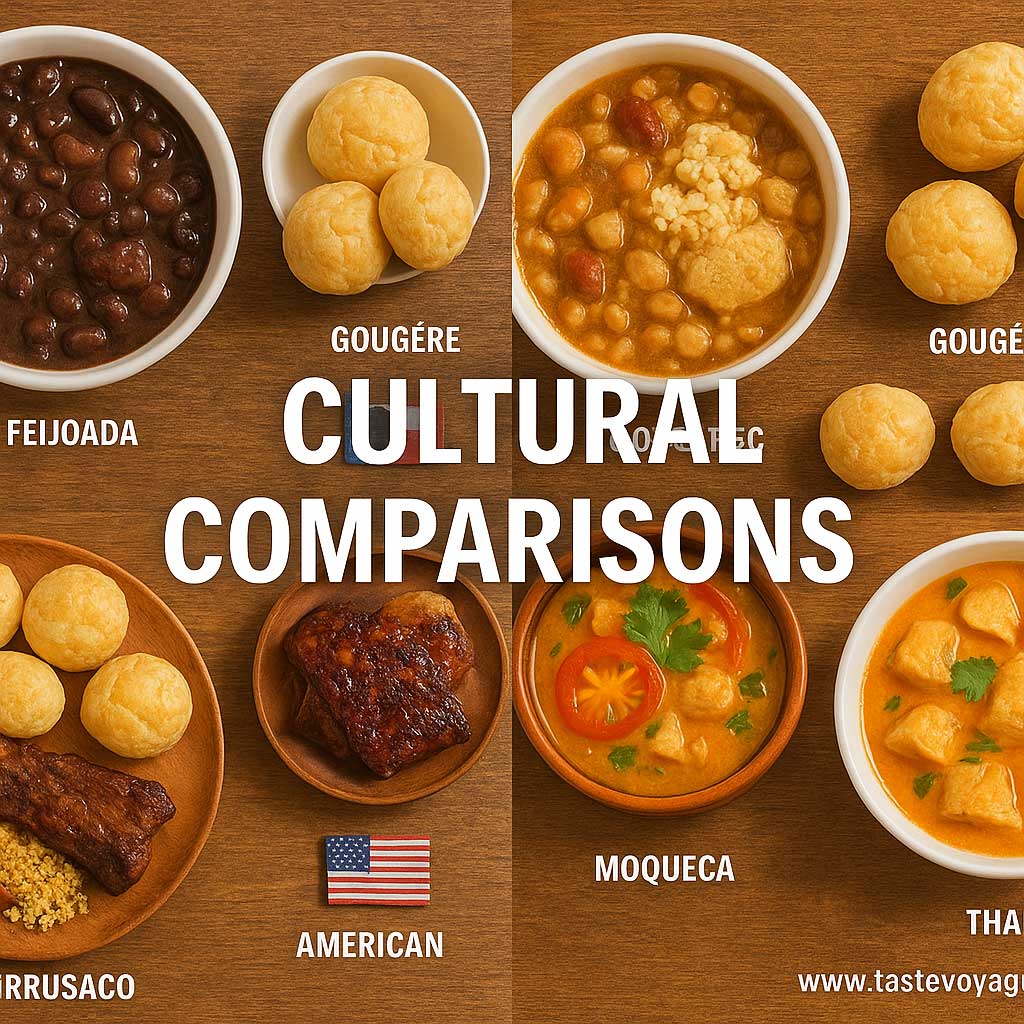Brazilian vs Japanese Cooking: Key Differences Explained
Travel the World Through Food >> Brazilian Cuisine>>Cultural Comparisons>> Brazilian vs Japanese Cooking: Key Differences Explained
Brazilian vs Japanese Cooking: Key Differences Explained
Brazilian vs Japanese Cooking Methods: A Culinary Journey
Food is more than sustenance; it’s a reflection of cultural identity, history, and artistry. Exploring the different ways countries prepare their dishes reveals unique philosophies, flavors, and techniques that make each cuisine special. Today, we delve into the fascinating world of Brazilian and Japanese Cooking Methods, highlighting their cultural significance and culinary artistry.
The Heart of Brazilian Cooking
Brazilian Cuisine is renowned for its vibrant flavors, hearty ingredients, and communal spirit. At its core, Brazilian cooking emphasizes simplicity, freshness, and a deep connection to local ingredients. Techniques like slow roasting, grilling, and simmering are prevalent, allowing flavors to develop fully. For instance, the traditional method of slow-cooking meats in a clay pot, known as feijoada, symbolizes comfort and togetherness.
Brazilian cooking celebrates diversity, blending Indigenous, Portuguese, African, and other influences. This melting pot results in a rich tapestry of flavors and methods. The use of wood or charcoal for grilling, such as in churrasco (Brazilian barbecue), exemplifies the importance of open-flame cooking, imparting smoky flavors that enhance the natural taste of meats. Additionally, the use of fresh herbs, citrus, and spices highlights a zest for life and a desire to savor each ingredient.
The Elegance of Japanese Cooking
Japanese cuisine is renowned for its precision, refinement, and balance. It emphasizes harmony between ingredients, seasonality, and presentation. Japanese cooking methods often involve minimalistic techniques that preserve the natural flavors of foods. Methods such as steaming, simmering, and delicate knife work allow ingredients to shine.
A hallmark of Japanese culinary philosophy is umami, the fifth taste. Techniques like dashi (broth) preparation, which involves extracting deep flavors from kombu (seaweed) and bonito flakes, exemplify the meticulous attention to detail. Sushi-making, with its emphasis on fresh, high-quality fish and precise rice preparation, showcases the importance of craftsmanship. Grilling, especially with methods like yakitori (skewered chicken), emphasizes controlled heat and clean flavors.
Japanese cuisine also values seasonal ingredients and presentation aesthetics. Dishes are often arranged to reflect nature’s beauty, fostering a sensory experience that goes beyond taste alone. The technique of tempura frying demonstrates mastery over heat and batter, creating light, crispy textures that highlight the ingredients’ purity.
Contrasting Techniques, Complementary Values
While Brazilian cooking leans on open-flame techniques and bold flavors, Japanese methods often focus on subtlety and finesse. Brazil’s approach invites communal gatherings around grilled meats and Stews, emphasizing warmth and shared joy. Conversely, Japanese cuisine values individual presentation and the meticulous preparation of each element, creating a refined dining experience.
Both cuisines honor their ingredients and cultural roots through their methods. Brazilian methods celebrate boldness and community, while Japanese techniques highlight harmony and precision. These diverse approaches enrich the global culinary landscape, offering a spectrum of tastes and experiences.
Celebrating Culinary Diversity
Understanding the differences and similarities between Brazilian and Japanese cooking methods enriches our appreciation for world cuisines. Each method reflects a unique cultural outlook—Brazilian cooking as a celebration of life and community, Japanese cooking as an ode to harmony and craftsmanship. Both traditions reveal how food can serve as a bridge to understanding and celebrating cultural identity.
Embracing these culinary philosophies encourages us to appreciate the artistry behind each dish. Whether it’s the smoky allure of a Brazilian barbecue or the delicate balance of Japanese sushi, each method tells a story—a story of people, tradition, and passion for flavor.
Final Thoughts
Exploring Brazilian and Japanese cooking methods offers a window into two vibrant culinary worlds. Their techniques embody cultural values that inspire and delight. By appreciating the richness of their methods, we honor the artistry and heritage that make each cuisine uniquely beautiful. Whether you’re a seasoned chef or a curious enthusiast, embracing these diverse traditions can deepen your love for the art of cooking and the stories it tells.
